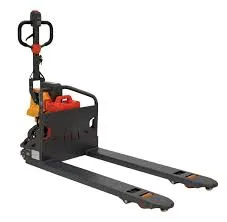


Industrial Fall Protection Ensuring Safety in the Workplace
In the ever-evolving landscape of industrial work environments, ensuring the safety of employees is paramount. One of the most critical areas of concern in industries such as construction, manufacturing, and maintenance is fall protection. Falls are among the leading causes of serious injuries and fatalities in the workplace, underscoring the necessity for robust fall protection systems and measures. This article explores the importance of industrial fall protection, the types of systems available, and best practices for implementation.
The Importance of Fall Protection
Falls can occur in various forms, from slips and trips on flat surfaces to falls from heights. According to the Occupational Safety and Health Administration (OSHA), falls account for a significant percentage of workplace injuries and fatalities. The implications of these accidents extend beyond the immediate physical harm; they also affect workplace morale, productivity, and financial stability. Employers have a legal and ethical obligation to provide a safe working environment, making fall protection an essential component of workplace safety protocols.
Types of Fall Protection Systems
There are several types of fall protection systems designed to prevent accidents. Understanding these systems is crucial for selecting the right one for a specific industrial setting
1. Guardrails These are often the first line of defense for preventing falls from elevated surfaces. Guardrails should be installed around platforms, edges, and openings in floors to create a physical barrier.
2. Personal Fall Arrest Systems (PFAS) These systems include harnesses, lanyards, and connectors. When a fall occurs, PFAS safeguards an individual by arresting the fall before they reach the ground. Proper training and inspection of these systems are vital to ensure their effectiveness.
3. Safety Nets Used in situations where the potential for a fall is high, safety nets can catch falling workers. They are often employed in construction sites but must be installed correctly to be effective.
4. Warning Line Systems These are typically used in roofing and other work at heights where physical barriers cannot be employed. Warning lines are marked off with flags or tape and serve as a visual reminder for employees to stay clear of edges.

5. Positioning Systems These systems allow workers to be supported in a position that prevents them from falling. They provide support while allowing freedom of movement and are commonly used in applications like maintenance and utilities.
Best Practices for Fall Protection Implementation
To create an effective fall protection program, companies should adhere to best practices that encompass training, equipment maintenance, and compliance
- Comprehensive Training Employees must receive training on the importance of fall protection, how to use fall protection equipment properly, and procedures to follow in case of a fall. Regular refresher courses can help maintain safety awareness.
- Regular Inspections and Maintenance Fall protection equipment should be regularly inspected for wear and tear. Any equipment that shows signs of damage should be repaired or replaced immediately.
- Tailored Fall Protection Plans Each worksite is unique, and fall protection plans should be tailored to the specific risks present. Conducting a thorough risk assessment before the start of a project can help identify potential fall hazards.
- Encouragement of a Safety Culture Fostering an organizational culture that prioritizes safety can encourage workers to be vigilant and proactive about fall protection. Recognizing safe practices and encouraging reporting of hazards can enhance overall workplace safety.
Conclusion
Industrial fall protection is not just a regulatory requirement; it is a fundamental aspect of promoting a safe working environment. By understanding the various types of fall protection systems and following best practices for implementation, employers can significantly reduce the risk of falls in the workplace. Investing in safety protocols not only protects employees but also enhances productivity and contributes to the overall success of an organization. In a world where safety is paramount, committing to effective fall protection is an essential step in safeguarding workers and fostering a culture of care and responsibility in industrial settings.



